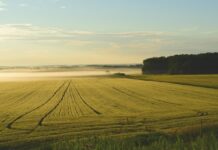By Tom Noyes
As more dairy producers adopt grazing as a way to increase farm profitability, the question “Should I change my breeding program?” is asked frequently.
And now that we have some years of experience grazing dairy cows under our belts, where we have been able to observe performance on grass, I think the answer is “maybe yes.”
I say “maybe” because it may depend on the breed. It has become more clear that the U.S. Holstein has been genetically developed for confinement systems and fed a Total Mixed Ration.
Some research from New Zealand reported by Eric Kolver looked at Holstein genotype and diet interactions. The New Zealand dairy industry has seen a large impact genetically on their cattle from what they call overseas genetics (largely U.S. bulls and some Dutch) in recent years.
From 1980 to 1999, the percentage of OS Holstein-Friesian ancestry in their Holstein cows increased from 2 percent to 38 percent and there is some concern about their performance on pasture.
For the past four years, Kolver has been evaluating how four groups of cows have performed on grass or TMR. All groups had similar dry-matter intakes. He found that on an all-pasture diet, OS Holsteins were significantly less likely to get in calf, lost more body condition during early lactation, gained less weight throughout lactation, and were less efficient at producing milk solids.
When fed TMR, OS Holsteins had similar reproduction, gained weight at similar rates during mid to late lactation and had similar efficiency of milk solids production as the New Zealand Holsteins.
Kolver says that, with the different types of cows now in New Zealand, producers might want to match the right cow type with the right production system.
“Clearly the New Zealand Holstein fits a low-cost, all-pasture dairying system better than an OS HF,” he said.
So it makes sense for producers who are looking for the low-cost pasture-based system to use New Zealand Holstein bulls here in the United States.
Kolver goes on to say that for producers who pursue an intensive seasonal dairying with high levels of supplements, overseas Holsteins will still possibly have reproduction problems.
Only high levels of feeding on TMR would narrow the reproductive gap between OS and New Zealand Holsteins.
I have not seen any similar research dealing with Jerseys. However, research in the U.S. clearly shows that Jerseys have an advantage in reproductive efficiency. Therefore, I see no advantage at this time in using New Zealand Jersey genetics.
Reports from New Zealand also indicate that they are doing considerable crossbreeding. Simply put, what they are doing is crossing the Holstein with Jersey to get higher components and gain back some reproductive efficiency.
Similarly here in the U.S. we are seeing an increase in crossbreeding. Again, it’s for the same reasons: improved reproduction and increased components. This is even happening in conventional commercial herds.
Another major difference between the New Zealand dairy cow and the U.S. cow is the frame size. In a Dairy Today story about “Kiwi Crossbreeds”, the dairy producers interviewed said that their ideal cow is between 1000 and 1200 pounds.
The crossbreeds and the New Zealand Holsteins fit that category. I know there are many dairies in the United States that graze Holsteins very successfully. Cows can learn to graze and historically, cows were grazers. So many herds can convert successfully.
However, if you have a commercial herd and grazing is going to be your choice of management, then maybe you need to look at changing the genetics.
(The author is a dairy agent for OSU Extension in Wayne County. Questions or comments can be sent in care of Farm and Dairy, P.O. Box 38, Salem, OH 44460.)












